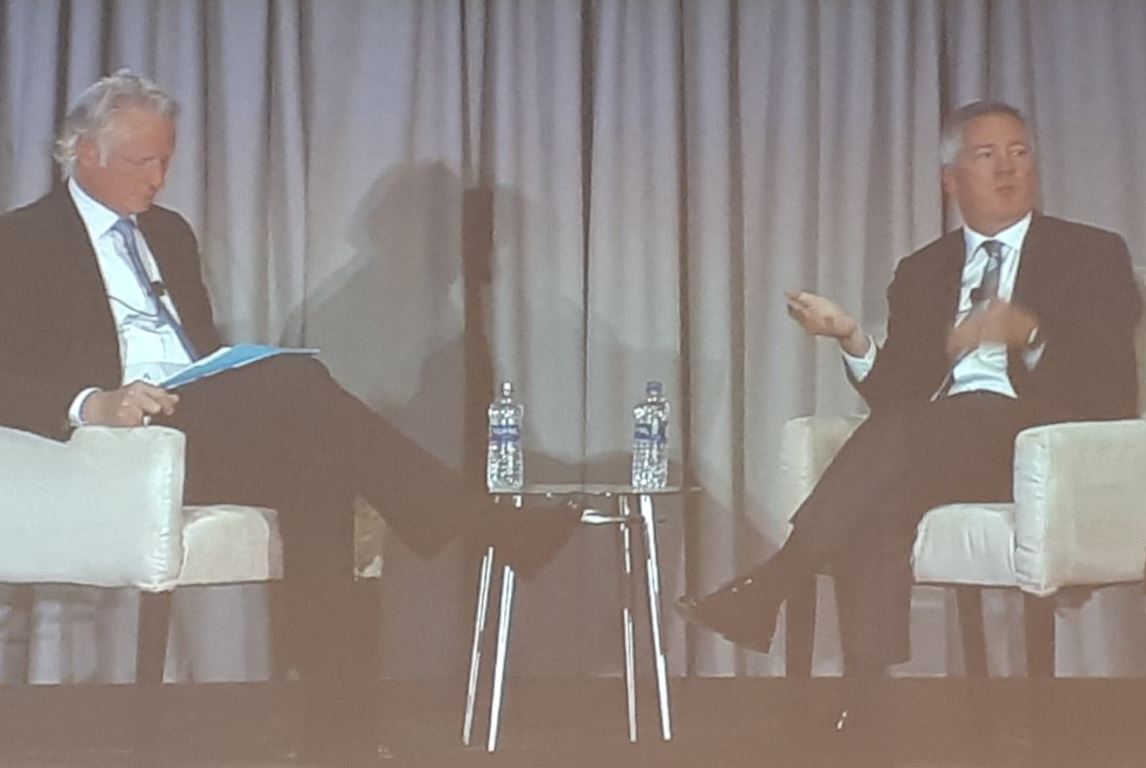I.CON 2018 Special Report: Experts Unveil Industrial’s Big Disruptors
The sector is expanding at an unprecedented pace, deeply impacting supply chains and changing the investment landscape. What's next for real estate's most sought-after asset class?
by Veronica Grecu

Mark Eppli, Ph. D., professor of Finance & Bell Chair, Real Estate, at Marquette University (left) and Gary Anderson, Prologis’ CEO for Europe and Asia
The state of global industrial development and the potential economic, political and technological disruptors that investors and developers should be on the lookout for on a global scale were the highlights addressed during the I.CON 2018 keynote last week in Jersey City, N.J. The two-day industrial conference, organized by NAIOP, gathered a crowd of more than 800.
Two high-profile industry experts—Mark Eppli, Ph.D., professor of Finance & Bell Chair in Real Estate at Marquette University, and Gary Anderson, Prologis’ CEO for Europe and Asia—discussed industrial real estate’s largest disruptors, along with the opportunities they bring to the game.
Infill locations: growing power
The industrial sector is expanding at an unprecedented pace and is already impacting supply chains to such an extent that, rather sooner than later, retail will become part of the industrial market. Geography matters now more than it ever did: Giant warehouses built two or three truck-drive days away from densely populated areas are no longer the norm.
Consumers expect their order to be delivered within 24 hours, so there has been a shift toward investing in infill locations where last-mile delivery centers are the last piece in the supply chain puzzle. In Anderson’s opinion, “If you can own a building that’s close-in and use it for last touch, that market isn’t going anywhere.” As a direct result, rents in infill spaces will continue to increase—even double—thanks to dramatically reduced transportation costs and much lower investment risks.
Competition and enhanced customer experience
Prologis is one of the largest commercial real estate companies globally, yet local markets where its competitors have deep relationships are now a key battlefield. The “location, location, location” mantra is now obsolete and the focus should move to being customer-centric. In order to become more competitive, commercial investors need to identify their customers’ needs and problems and create business opportunities through smart solutions.
“It’s better to build on a customer experience that is unique to that customer and if you’re not thinking of the customer’s pain points, you should,” said Anderson. He added that pushing for great customer service is a partnership, not a transaction.
The rise of driverless vehicles
The impact of technology on the industrial sector is stronger than ever, and the next big disruptor around the corner is autonomous vehicles. “Every automobile company on the planet is investing millions of dollars into this technology … And it’s not going to be the technology that’s going to slow us down; it’s going to be legislation and regulation,” Anderson said.
While using autonomous vehicles in last-mile delivery facilities will drastically reduce transportation and labor costs and enhance customer satisfaction, Anderson sees some implications in terms of how far a driverless truck is allowed to travel within a 24-hour period as opposed to a human truck driver. In the future, this could impact the geographic location of regional distribution centers, in the sense that they will have a much broader reach than they do now. And with the marginal cost of transportation—now estimated at around 50 percent in the supply chain—out of the way, the sky could be the limit for rent growth.







You must be logged in to post a comment.